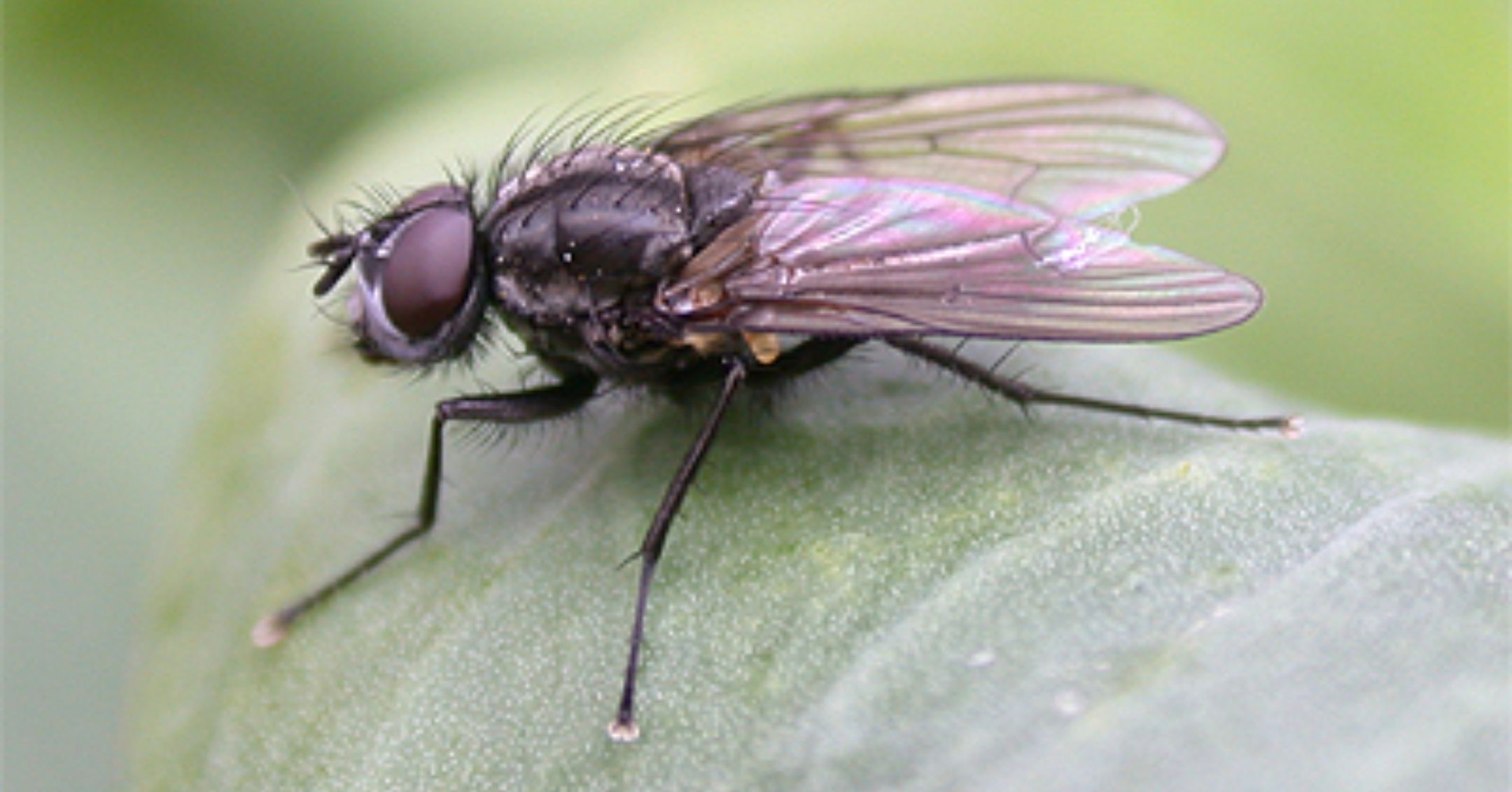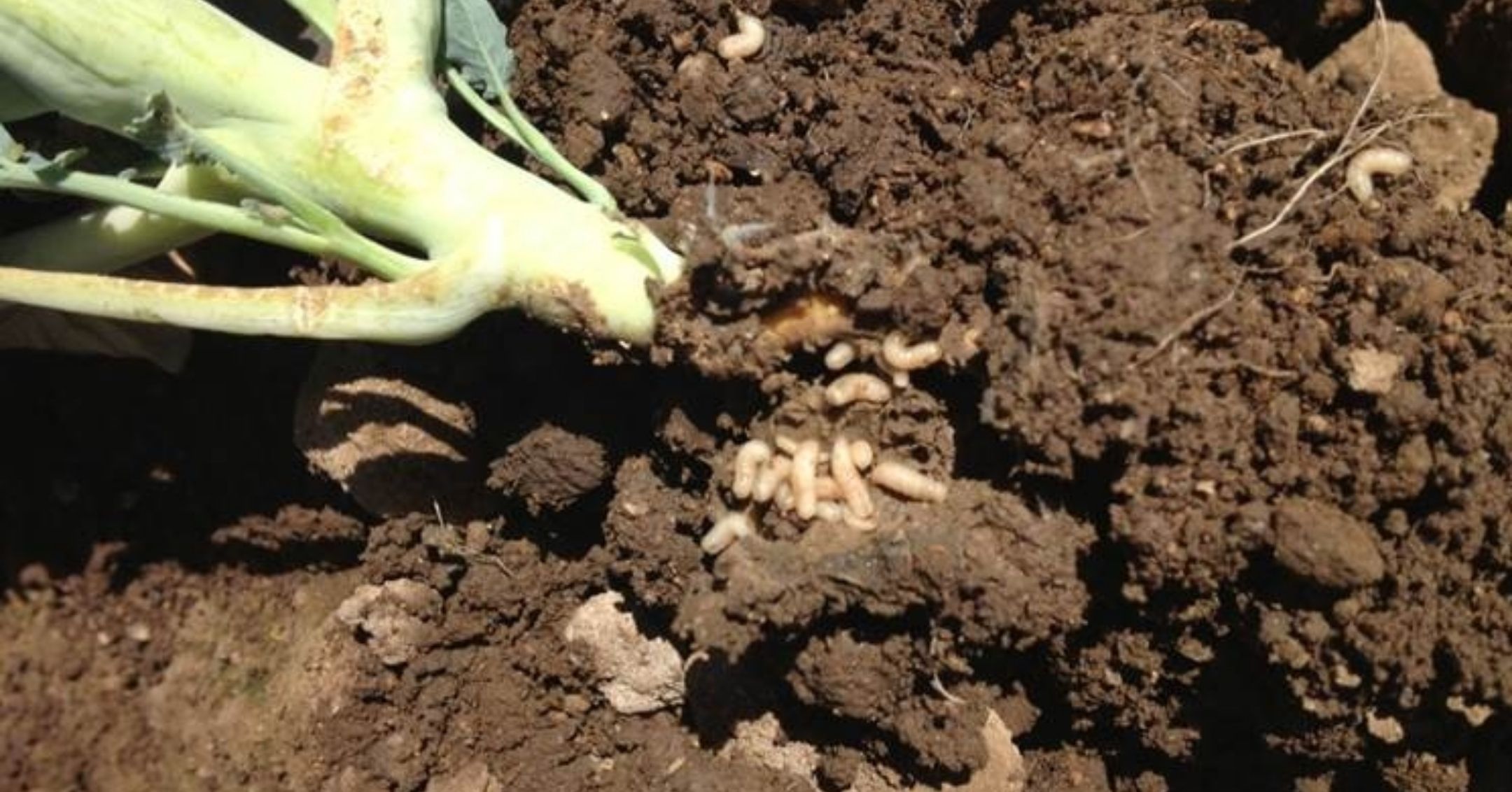Cabbage Maggot


Description
Adult: Dark gray flies about half the size of the common house fly.
Egg: Oval-shaped, white, and about 1/8 inch long.
Larva: White legless maggots pointed at one end, about ¼-inch long. Pupa: About ¼ inch long and brown.
Life History
Cabbage maggots overwinter in the soil as pupae. Adults emerge in April to May and lay eggs singly on host plant stems or in and on the soil near the stems. Maggots hatch in three to seven days and feed on underground plant parts as they migrate through the soil. After 3-5 weeks, mature maggots leave the plant and pupate in the soil nearby. A second generation of adult flies emerge in about 2-4 weeks. There are 2-4 generations per year.
Damage
Damage is caused by the larvae which tunnel in and out of root systems of all cole crops. Tunnels interfere with plant nutrient uptake as well as provide entry for pathogens that cause blackleg and bacterial soft rot. Young plants are most susceptible. Healthy, well established plants can usually tolerate moderate infestations.
Monitoring
- Cool, wet spring weather is favorable for cabbage maggot development.
- Watch for wilting, lighter green plants, or reduced growth on newly emerged crops.
- Pull up symptomatic plants, and check roots and soil to confirm the presence of maggots. If roots show signs of tunneling, but no maggots are present, maggots have left the roots to pupate.
- Yellow sticky traps and sweep nets may also be used to monitor the adult fly.
- Monitor for eggs on transplants that are hardening off in a cold frame or outdoors. Eggs can be found along the stem, or in and on the soil near the stem of young transplants.
Management
Cultural
- Rotate crops. Do not follow susceptible crops with susceptible crops unless sufficient time has passed for the residue to dry or decompose completely.
- Delay planting until after the first adult flight is completed. The overwintering generation of flies usually are finished around mid-May in northern Utah and eggs are killed when soil temperatures reach 95°F. Planting in late-May to June is lower risk for infestation than planting earlier in May.
- Use floating row covers at the time of seeding or transplanting. Covers will act as a barrier against adult flies, but will not work where brassicas were grown the previous year, as pupae left in the soil could emerge under the cover. Row covers can be removed as soil temperatures rise, first flight ends, and crops grow large.
- Disk under crop residues immediately after harvest to bury the overwintering puparia.
- Avoid hardening-off transplants near infested fields.
- If several rows of seedling plants are infested, clean the field and replant.
Chemical
Treat spring planted or transplanted crops every year in areas where cabbage maggot causes economic injury, with a band of insecticide at the base of the plant at the time of planting or transplanting. Later sprays are ineffective.
Biological
One of the primary predators is the rove beetle. Both adults and larvae prey on maggot eggs, larvae, and pupae. The parasitic wasp, Tybliographa rapae, lays its eggs in maggot larvae that are near the soil surface.

